Jen Wilson's Kindergartners Discover STEAM and Meaningful Connections in the Great Outdoors
Kindergartners in Jen Wilson's class explored natural elements through a STEAM design challenge

Collaborating with In-School and Community Resources
If you’ve attended Seedlings, you know well that it is not your typical STEAM professional development workshop. Yes, many are hands on, fun, and fabulous opportunities for growth. But there are several characteristics of Seedlings that we believe make it truly unique: The focus on collaboration with colleagues, learning about local resources that could enrich student learning, and creating integrated curriculum that helps children make connections not only across disciplines (and beyond STEAM), but to their own personal lives and interests.
Jen Wilson, a kindergarten teacher at Cook Hill School in Wallingford, Conn., an SEC alumna from 2017, embodies the Seedlings ethos of Collaboration, Community, Connections, and hands-on STEAM learning. In 2021, Wilson and the school librarian, Anna O’Brien, were awarded a grant from the Wallingford Education Foundation to develop a program they named KinderTinker. Modeled after a program started by teachers at Moses Y Beach Elementary School called KinderWoods, Jen and Anna are bringing the learning outside. Each month, Jen’s class of kindergarteners are playing and learning in different natural spaces around Wallingford or on their own school grounds. In these outings, the children have time for exploration, as well as structured STEAM based activities that tie into the kindergarten science units.
Weather Exploration and Challenges
One of the science units for Jen’s kindergartners covered the topic of weather. Some of the children’s concerns and questions revolved around extreme weather impacting areas around the country. Students learned about factors that contribute to the formation of hurricanes and other storms; but Jen also wanted to address the children’s questions about the human impact of such weather events in a meaningful way. This was an opportunity to connect her students with Wilfred Velez, a bilingual teacher at the school originally from Puerto Rico, who could share his family’s experience with Hurricane Maria. He showed the children photos of the island from before and after the hurricane with the students. They talked about humanitarian efforts to support communities affected by the hurricanes, and specifically about the challenges of transporting supplies to an island such as Puerto Rico. This subsequently led into a design challenge to construct a boat that could float and bring aid to people living on an island

A Design Challenge with Natural Materials
Jen’s kindergartners visited Wharton Brook Park to extend the class’s study of weather. Wilfred joined the class and helped students establish purpose in their work by reminding them of the stories he shared about his friends and family in Puerto Rico, along with a quick review of how hurricanes form. Anna shared two non-fiction books – one about hurricanes, the other about rescue boats – that established the connection among the science, social studies, and engineering components of the project.
The challenge: Construct a boat that could float and carry supplies to people living on an island, this time only using twine and the natural materials found outside.
The steps (with problem solving all along the way):
- Brainstorming what materials might be appropriate
- Exploring and finding materials
- Designing and constructing the boats
- Test by floating their boats in the park’s pond.
Tips:
- Jen planned to have enough adults to make sure that when children did get stuck with a fine motor skill or a question of design, there would be someone there who could scaffold the child’s thinking process or tie twine and hold sticks.
- Recognize what would be the appropriate neuro-diverse students so that they felt confident about creating their boats.
Take Aways



-
STEAM
- Science: Children made guesses about what would float and sink, and tested their hypotheses through trial and error.
- Technology: Children fashioned tools to help them make holes in their boats or to scrape off bark, and used leaves to create wind catchers.
- Engineering: Students used their knowledge of the properties of natural materials and how they behave to design something that could be a solution to a human problem.
- Arts: Some students added embellishments to their rescue boats, such as leaves, flowers, and pinecones, in order to make them more aesthetically pleasing.
- Mathematics: Children counted the number of strings and sticks they used; considered balance as they added floatation devices to their boats; and created and used their own non-standard units of measurement.
- Science: Children made guesses about what would float and sink, and tested their hypotheses through trial and error.
-
Language Development
- When given opportunities to collaborate with peers, students are put in the position of needing to use listening and speaking skills.
- Writing: Several children took the initiative to use journals to record their work in pictures and words.
- Two students were ELL students speaking little English. The design challenge gave children the opportunity to engage in the STEAM project using their primary language, while also being exposed to new English vocabulary.
- When given opportunities to collaborate with peers, students are put in the position of needing to use listening and speaking skills.
-
Social Emotional Learning
- Joy: Children were joyful in their work, in exploring their environment, and in making discoveries. They were especially full of joy when they saw their boats floating.
- Pride: Children could not wait to share their accomplishments with peers and teachers.
- Collaboration: Students naturally collaborated while constructing their boats, dividing up the work and helping one another
- Appreciation for nature: Children were amazed at by a bug’s highly effective camouflage; they took pleasure in the softness and “tingly”-ness of a kind of fungus; they noticed the bright chartreuse color of lichen.
- Positive behavior: Not a single child was disruptive of any other child’s work; children were safe and responsive to adults.
- Focus: Every child was highly engaged in his or her work.
- Working through frustrations: Finding ways to attach the natural materials together was certainly a challenge for this age group, but each student stuck with it with fierce determination.
-
Fine and Gross Motor
- Outdoor exploration allows for opportunities to develop gross motor skills. Walking on uneven surfaces, going over fallen logs and climbing up trees (supervised to "be safe.")
- Picking up sticks, leaves, pine cones and other natural materials not only help grow fine motor skills, but the different textures and sizes also develop a child's proprioceptive system!
- Constructing a boat is not only a fun engineering project, but motivated the children to utilize their fine motor skills.

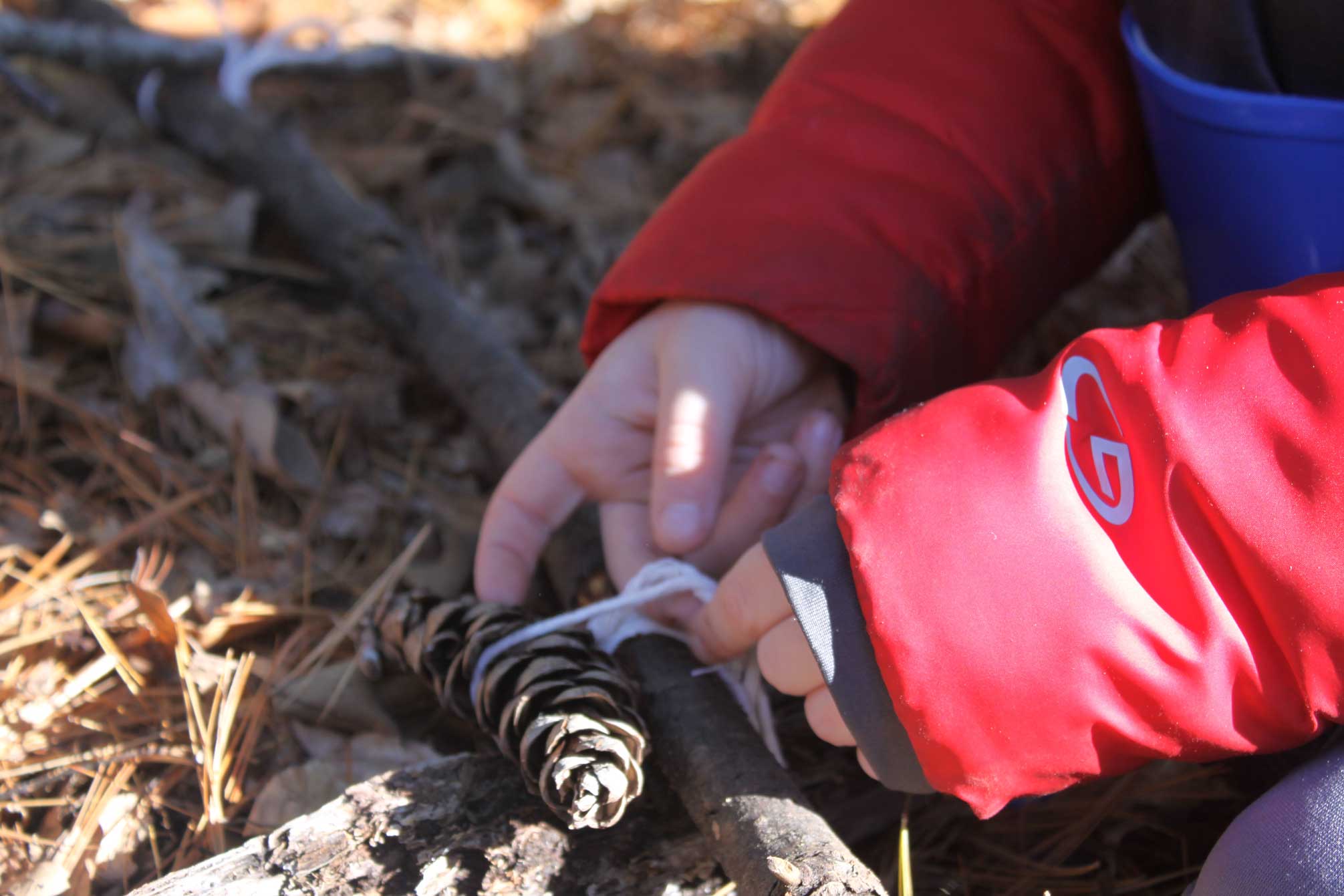

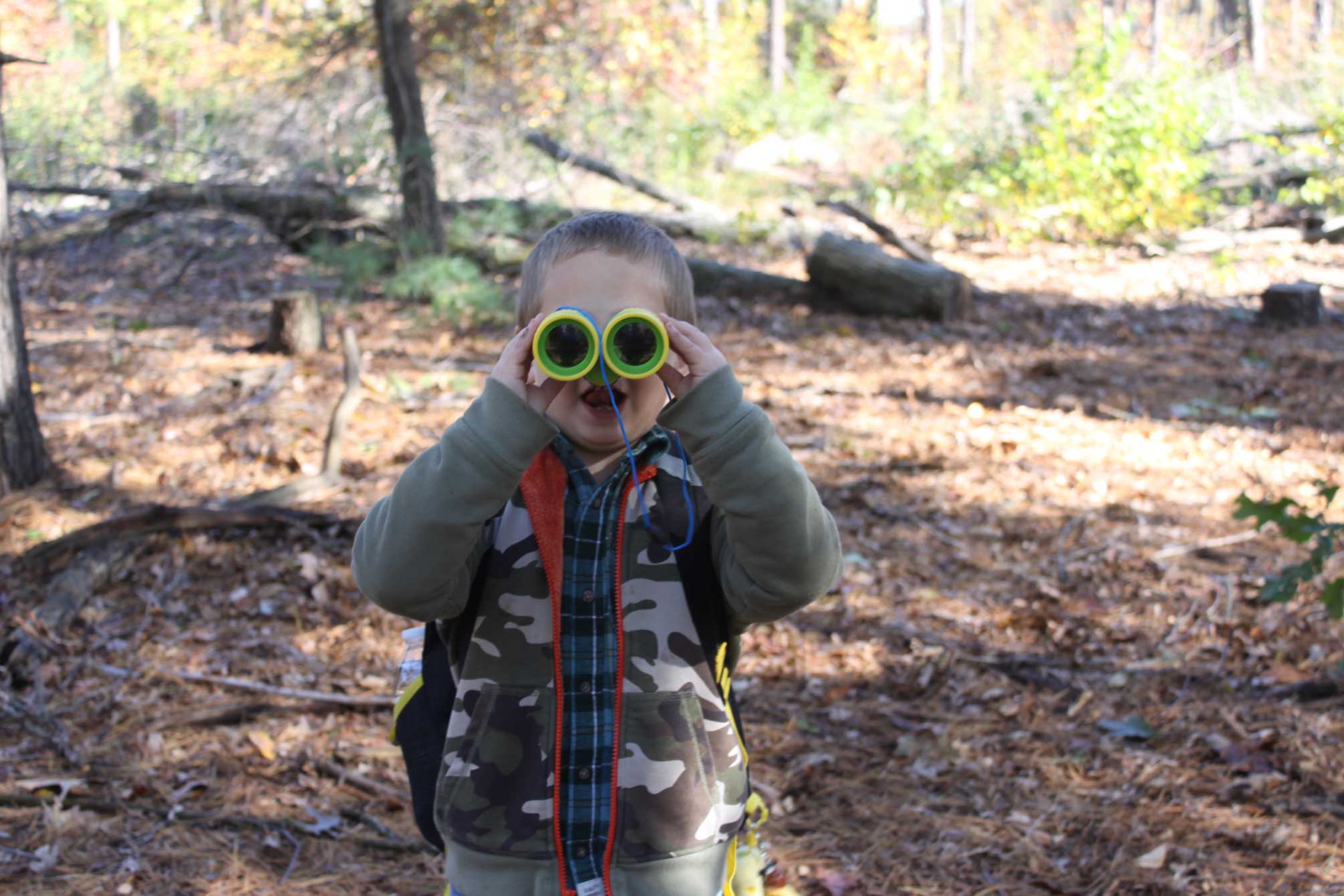

Integrating into Your Classroom
We don’t all have the ability to rent a bus and take our students into an idyllic wooded setting. (Jen applied for and received a grant to support this work.) But the lesson falls beyond this extra bonus of taking learning outside and off campus: Jen looked for ways to make required curriculum (weather) relevant to her students’ lives and interests by making use of resources available to her (i.e. bringing Wilfred in as an expert on Puerto Rico; using natural materials), collaborating with colleagues to develop a richer curriculum, and integrating other disciplines to help connect with children’s lives, interests, and needs. These are not easy feats by any means, but they are achievable in the traditional classroom setting and the results can be astounding.
Jen Wilson is a Seedlings alum and former Seedlings Fellow from Cook Hill Elementary School in Wallingford. She has been teaching kindergarten for more than two decades. Patient, caring, and creative, she is most passionate about extending her teaching outside the four walls of the classroom. She’s also a mother of two who loves running and spending time outdoors with her family, especially at the beach.
More from In My Classroom
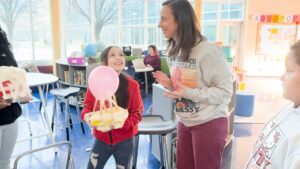
Watch Students Explore Gravity Concepts And Problem Solve through STEM
J.S. Martinez Magnet School’s STEM Resource Teacher Alyssa Granata-Basso welcomed Seedlings Educators Collaborative to observe students don their engineering hats in a hands-on problem-solving lesson exploring gravity. In teams, students designed, built, tested, and re-engineered a traveling vehicle to protect Alyssa’s friend “Eggbert” from the impact of landing.
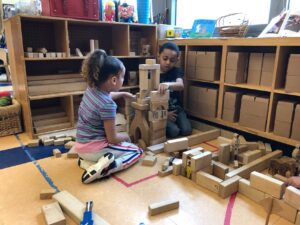
Reclaiming Kindergarten by Going Back to the Basics
As schools and districts place increasing emphasis on scores from high-stakes testing, teachers receive less autonomy in developing experiences and curriculum that engage students in meaningful learning. Over the course of one year, teachers revamped their kindergarten program, putting children’s development and interests in their rightful place as the centerpiece of curriculum by bringing play back into the classroom.
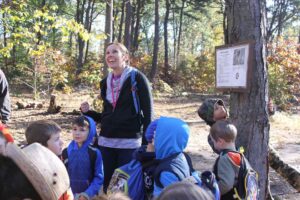
Jen Wilson’s Kindergartners Discover STEAM and Meaningful Connections in the Great Outdoors
Jen Wilson, kindergarten teacher at Cook Hill School in Wallingford, and the school librarian, Anna O’Brien, were awarded a grant from the Wallingford Education Foundation to develop a program they are calling KinderTinker. Jen and Anna are bringing the learning outside for extended free play and exploration, as well as structured STEAM-based activities that tie into the kindergarten science units.
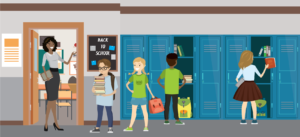
What should we expect from a 5th grader?
There are academic, behavioral and social-emotional benchmarks we expect of our general education students, no matter the year, but fifth grade, in particular, brings about new expectations as students move from lower elementary to more focused academic work, classroom transitions, and the need for organization and multitasking, among other important skills.

Animals in Winter: Student-Driven Learning to Explore Habitats
Jen Wilson’s kindergartners learn about shelter, safety, food (incorporating science, nature, math, engineering, literacy and art) through play- and project-based learning.

Hug a Tree: A Framework for STEAM Learning
Hug a Tree: A Theme for STEAM Learning Seedlings Facilitator Julie Peterman took her students out to look at trees for a meaningful learning experience. One warm late winter morning, Julie Peterman’s 3-year old class at Conte West Magnet School to were introduced to Nyree Hodges, an educator at Common Ground Urban Farm and Environmental
